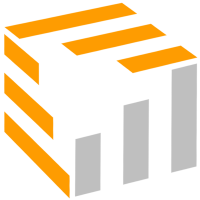- Algeria
- Australia
- Bahrain
- Belgium
- Brazil
- Canada
- China
- Denmark
- Egypt
- Finland
- France
- Germany
- Hong Kong SAR China
- India
- Iran
- Ireland
- Italy
- Japan
- Kuwait
- Lebanon
- Libya
- Luxembourg
- Malaysia
- Mexico
- Morocco
- Nepal
- Netherlands
- New Zealand
- Norway
- Oman
- Pakistan
- Panama
- Philippines
- Poland
- Portugal
- Qatar
- Russia
- Saudi Arabia
- Singapore
- South Africa
- South Korea
- Spain
- Sri Lanka
- Sweden
- Switzerland
- Syria
- Taiwan
- Tajikistan
- Tanzania
- Thailand
- Turkey
- Ukraine
- United Arab Emirates
- United Kingdom
- United States
- Zimbabwe
Full Stack (Forward-Deployed) Engineer
Job Overview
Remote, Any Country
Full Time
20 days ago
Additional Details
1601
92
Remote
2+
Job Description
graph8 is not split between “engineering” and “GTM delivery.” The entire company operates as an engineering organization. Every role is responsible for building, testing, iterating, and productizing — whether it’s onboarding a client, running enrichment, or adding a new workflow. Every client setup creates improvements that we bring back into the platform as reusable modules. Over time, even Growth Managers will become engineers, closing the loop: the same people who hear client needs can immediately build the solution. This makes delivery and product the same thing — a breathing, modular platform that evolves through every engagement. The Role: Forward-Deployed Engineer (FDE) Forward-Deployed Engineers are the first wave of this model. You’ll work directly with clients — supported by Growth Managers — to set up accounts, configure ICPs, and connect every part of the platform: As you implement workflows, you’ll identify gaps, extend the data sources, and turn solutions into productized features. FDEs are engineers embedded in delivery: close enough to the client to capture real needs, technical enough to build solutions that scale. Responsibilities: Client setup as engineering Engineering reusable modules Operate across the platform Continuous improvement Practical Example A client needs new data points for their ICP. You’ll: Requirements Nice-to-Have: Who You Are Why Join graph8 Application Process To apply: Send us your GitHub/code sample, an enrichment workflow you’ve built, and a short note on how you’d turn a client-specific request into a reusable module.


